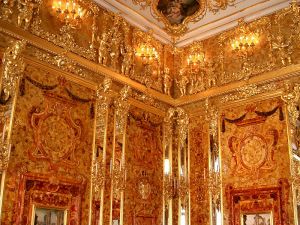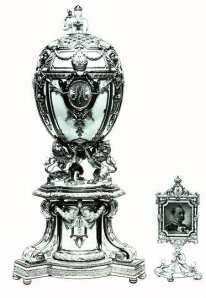I am interrupting this week’s series for our (myself and fellow bloggers) discourse on our governments. As always, we do not take a partisan stance, but point to areas where governments are over reaching their own laws or not meeting the basic responsibilities entrusted to them by the people. First I want to say my sympathies are with the Dutch people. The Netherlands is a nation of 16 million people, so the loss of 193 of their friends, neighbors, and family is of a greater impact than September 11 was to the United States with its population of 330 million people (in other words, a larger PERCENTAGE of the Dutch population was killed on July 17, 2014 than the percentage of Americans on September 11, 2001).
Each nation in the world is different, and the government of each nation in the world is different, reflecting the people which it represents. Different peoples have different priorities, which are neither good nor bad. These priorities are based on the cultural and personal experiences of the citizens. The United States has, in times of crisis, taken a stance or action on issues to make a statement concerning what we judge to be right or wrong actions. The 1980 Olympics is a good example of this. In 1979 the Soviet Union invaded Afghanistan. In 1980 the United States boycotted the Summer Olympics in Moscow to protest the Soviet invasion (in addition to many other actions to protest the Soviet invasion).
Boycotting the Moscow Summer Olympics did not cause the Soviet Union to leave Afghanistan (the Soviets stayed until February of 1989). President Carter knew they would not leave even before he made the decision to boycott Olympics. The decision was not universally popular in the United States among the citizens and the athletes. Some of those athletes missed their last opportunity (in some cases ONLY opportunity) to perform in the Olympics. However, the United States government believed this was an important statement the United States must make in defense of the defenseless.
Now, in 2014, the governments of the world are faced with deciding how to respond to the shooting down of Malaysian Airlines Flight 17. I predict that words will be passed, politicians will take weak ineffectual actions, and then publicly congratulated each other for their “tough stance” with Vladimir Putin. Their backslapping and “high-fiving” will not be for their own benefit, it will be to convince us that their weak and ineffectual actions were not weak and ineffectual.
Some of you will disagree with me. Some of you believe that our governments will send a strong message and ensure this sort of thing never happens again. Some of you may even believe that those responsible will be brought to justice. I respect your opinion, but strongly disagree; let’s look at the economics of the United States, Russia, and the Netherlands.
In the United States, bribery is illegal, even those in the aristocracy of America have had to pay a price for being caught involved in bribery. In Russia bribery is illegal and the penalties in Russia are tougher than in the United States. In Russia, bribery is a way of life; it is how people survive, feed their families, house their families, and pay their bills. Do you need your papers processed by a bureaucrat in Russia? That could be an incredibly long time for the simplest documents. But, with the right gift to the right person you can get you documents in a timely manner. In the Netherlands, bribery is a tax write-off.
Report to the American tax service that you paid a bribe and you could find yourself arrested. Report to the Russian tax service you paid a bribe and that Russian bureaucrat will probably call you a fool and tell you to go away. Report to the Dutch tax service you paid a bribe and they will take it off your taxes. This beautifully illustrates the difference in the three countries over what is perceived as morally right. This is why I say nothing will happen in response to the death of 193 Dutch citizens.
Even if Vladimir Putin found out about the shoot down of MH 17 the same way I did, he is still responsible for the tragedy. The shoot down occurred in a Russian controlled part of the Ukraine, perpetrated by Russian backed insurgents. These insurgents are not just supported by Russia; they have been trained and armed by Russia. So, even if Vladimir Putin did not know the shoot down was going to happen, his actions have caused the tragedy.
The Dutch people have now learned, in the cruelest way possible, they are no longer safe in the 21st century. This is a new way of life to which the Dutch people are going to have to adjust.
The Russian billionaires and millionaires keep their money in Dutch banks, Russian corporations do their banking business in Dutch banks, Russian oil and natural gas is the energy that runs the Netherlands, the government of the Dutch people will not take a tough stance with Russia. Given the choice between commerce and the safety of its own people, commerce wins the day. For hundreds of years commerce has always held veto power over all else in the Netherlands.
Today the Dutch people have to decide if life is to continue “business as usual.” Is commerce more important than your neighbor, wife, husband, father, mother, and friends; is commerce more important than the life of your own children. On July 16, 2014, the answer to that question was yes, but the unstated opinion of the person answering the question was that September 11, 2001 could never happen to the Dutch people. Now that it has happened, if your are Dutch, what do you do?
Though the capitalism of America is often attacked for its greed, it is the socialism of Europe that will turn a blind eye to Russia to protect its commercial ties with Russia.
I believe that each and every life is priceless beyond compare, but I am not a European. This is their decision, and I believe their choice is not the choice I would make for my daughter. If the Dutch people choose commerce over safety, I understand, but respectfully disagree. If the Dutch people choose safety for their neighbors, friends, and family over commerce – they need to speak out and speak out loudly. In the Netherlands commerce has been the first choice for so many centuries that your government will only assume it is the choice today as well – and why wouldn’t they?
No matter what the future holds, I will always support the Dutch people, and my sympathies and prayers are with them in this dark hour.
(next week the lost ships of the 1715 Spanish treasure fleet)





